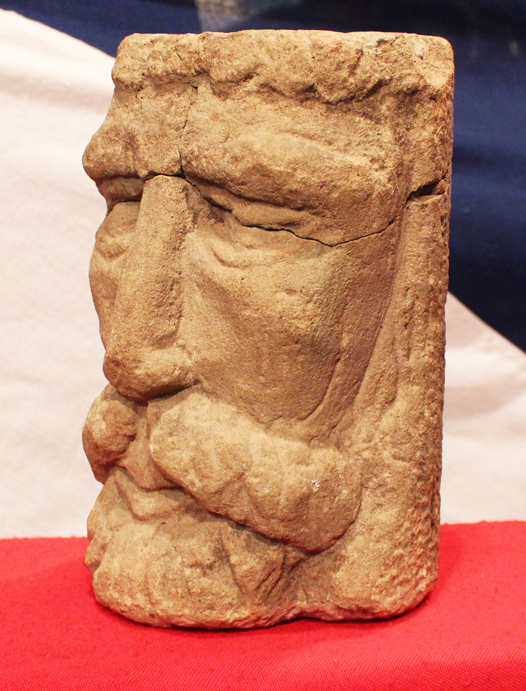A Superb Medieval, 13th - 14th Century Carved Stone Head of a Bearded Man,This Stunning Sculpture Would Grace and Compliment Any Interior Decor or Collection
A most captivating piece of original medieval sculpture. Possibly removed from an old abbey or monastery during the dissolution and destruction of the monasteries in the time of Henry the VIIIth. Probably a portrait of a person connected to the construction of the medieval building that it once adorned. Possibly even a mason that worked on the building. At some time it's body has been very well conserved and restored around some cracking, probably in the last century. The head was the chief symbolic part of the body for Western culture in the Middle Ages, from the waning days of the Roman empire to the Renaissance. Since antiquity it signified not only the intellect, the centre of power, but was also regarded as the seat of the soul. The face is not only central to identity, but is also the primary vehicle for human expression, emotion, and character. As such, the depiction of the head becomes a true test of the quality of the artist and a telling indicator of style. By focusing on this one genre of object, the Middle Ages can be seen in a new light. Few sculpted heads of the Middle Ages were portraits in the modern sense. The reasons for representing the human face were far more various than recording the physical likeness of an individual. During the High Middle Ages, portraiture did not rely on likeness so much as attributes, coats of arms, inscriptions, and other identifying signs. Thus individual selfhood was subsumed in broader forms of corporate identities. At the same time, the notion of a "true" portrait encompassed such miraculous images as the Veil of Saint Veronica, imprinted with the face of Christ.
By the fourteenth century, veristic portraiture re-emerged as a supplement to symbolic representations of identity, especially in the main European capitals?Paris, London, Prague [Verism refers to a hyper-realistic portrayal of the subject's facial characteristics]. A 1925 photograph in the gallery [for information only] of early stone sculpture on display at the Cloisters that was originally acquired by George Grey Barnard (1863?1938), a distinguished American sculptor, and an avid collector and dealer of medieval art. We show in the gallery a 14th century carved heas in Southwell Minster, and a row of four carved heads in St Magnus' Cathedral in Kirkwall Orkney, probably carved by Durham masons. The second head from the left is incredibly similar to our example. Founded in 1137 by Earl Rognvaldr, in honour of his murdered uncle St Magnus aka Earl Magnus Erlendson. At least some of the early masons that worked on the cathedral came from Durham. One of the hidden gems of St Magnus' is that in the best traditions of cathedrals everywhere the stonemasons decorated the cathedral with little carved heads. They're supposedly caricatures of some of the masons or of their foreman but no-one really knows for sure, and some are definitely not totally human, with half man/half beast faces: Our head is 7.5 inches x 5.25 inches x 5 inches. Weight approx 3.5 kilos
Code: 22419
1195.00 GBP








